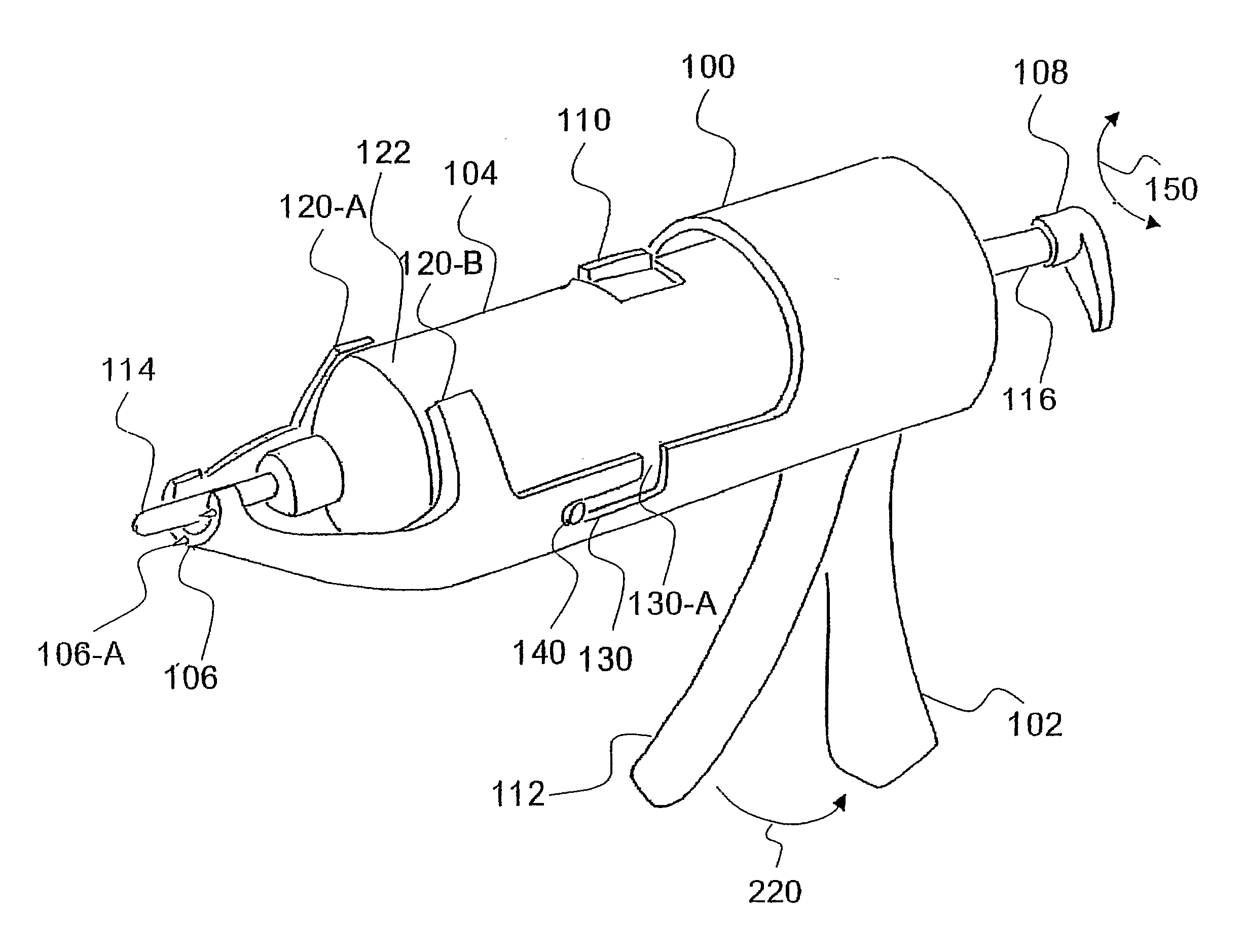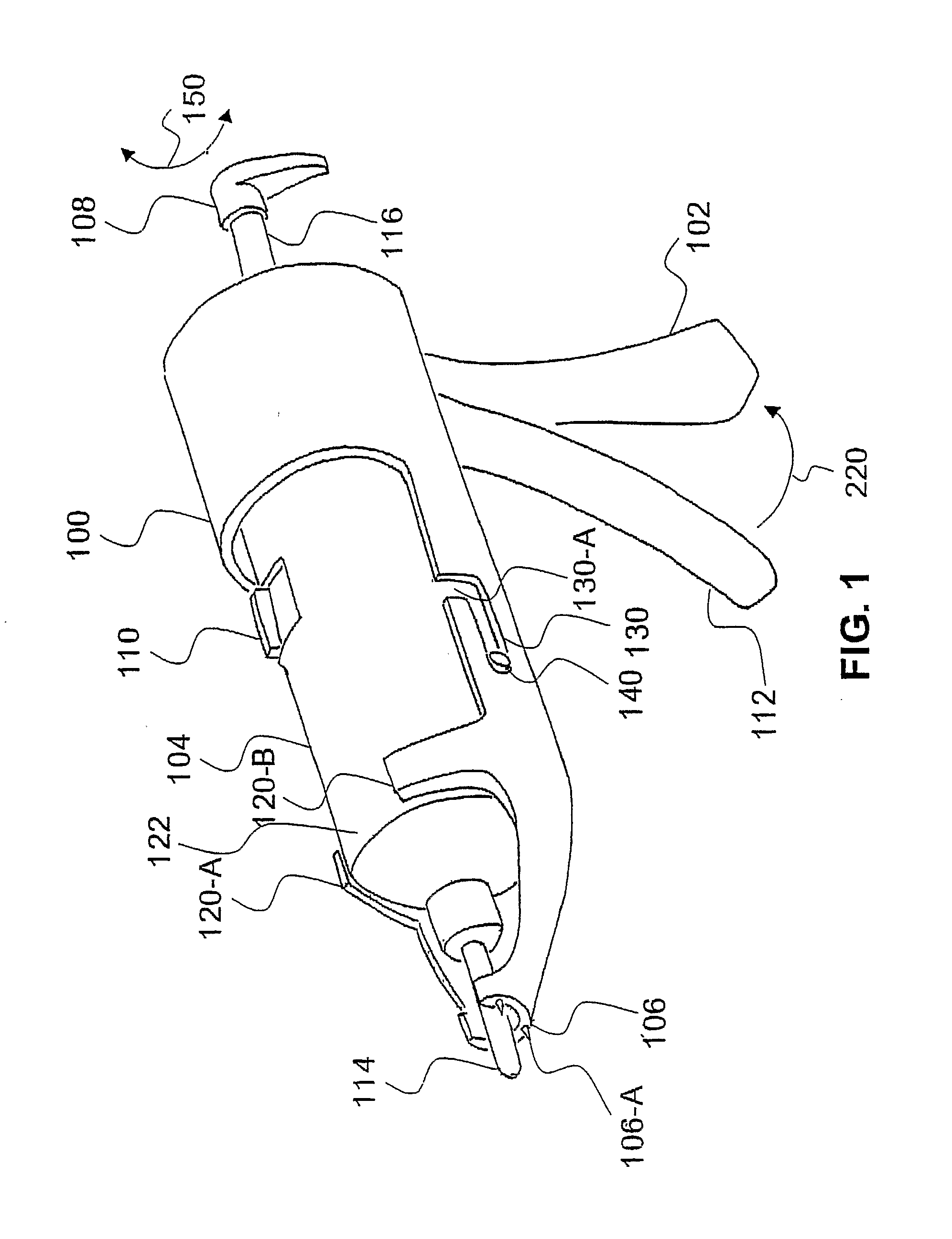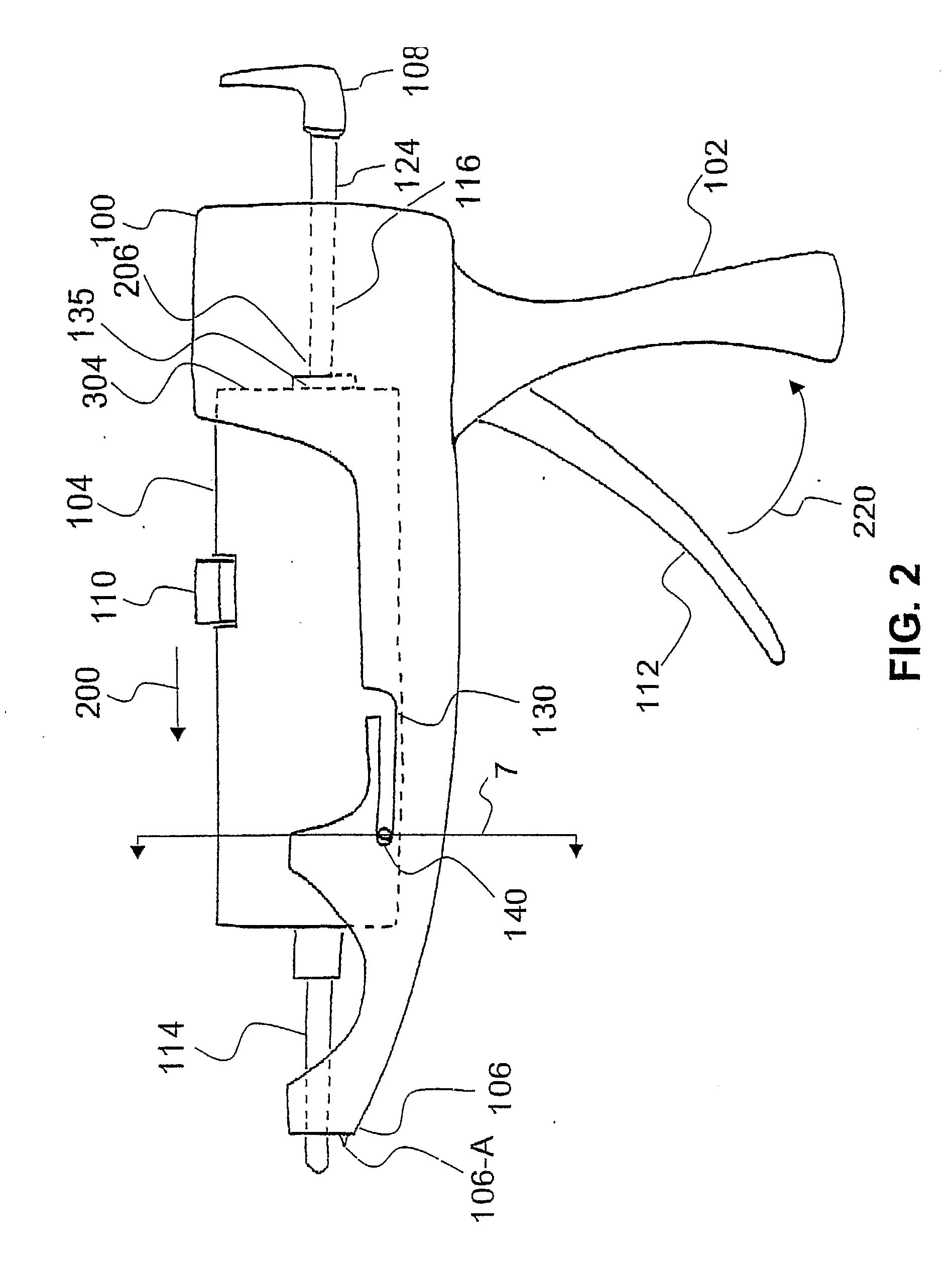Apparatus and method thereof for drilling holes in discrete controlled increments
a controlled increment and drill bit technology, applied in the field of surgical instruments, can solve the problems of pause or stop, serious neurological injury leading to coma and/or death, and the advancement of drill bits is arrested, etc., to reduce the time necessary, increase the level of safety and security, and simple construction
- Summary
- Abstract
- Description
- Claims
- Application Information
AI Technical Summary
Benefits of technology
Problems solved by technology
Method used
Image
Examples
Embodiment Construction
[0055]The following detailed description of the preferred embodiments of the present invention will be made with reference to the accompanying drawings. In describing the invention, explanations about related functions or constructions which are known in the art will be omitted for the sake of clarity in understanding the concept of the invention.
[0056]A front perspective view illustration of the drill according to the present invention is shown in FIG. 1. The drill according the embodiment of the present invention includes a main unit 100, a handle 102, a removable drill unit 104, a stabilization platform 106, an advancing mechanism 116, an advancing trigger handle 112, a power switch 110, a guide 130 and a drill bit 114. The guide 130 includes one or more guides, which will be described hereinbelow, disposed along the longitudinal axis of the main unit 100 for positioning the drill unit 104. The handle 102, along with the advancing trigger handle 112, is suitable for grasping by a...
PUM
| Property | Measurement | Unit |
|---|---|---|
| Force | aaaaa | aaaaa |
| Transmission | aaaaa | aaaaa |
| Depth | aaaaa | aaaaa |
Abstract
Description
Claims
Application Information
 Login to View More
Login to View More - R&D
- Intellectual Property
- Life Sciences
- Materials
- Tech Scout
- Unparalleled Data Quality
- Higher Quality Content
- 60% Fewer Hallucinations
Browse by: Latest US Patents, China's latest patents, Technical Efficacy Thesaurus, Application Domain, Technology Topic, Popular Technical Reports.
© 2025 PatSnap. All rights reserved.Legal|Privacy policy|Modern Slavery Act Transparency Statement|Sitemap|About US| Contact US: help@patsnap.com



